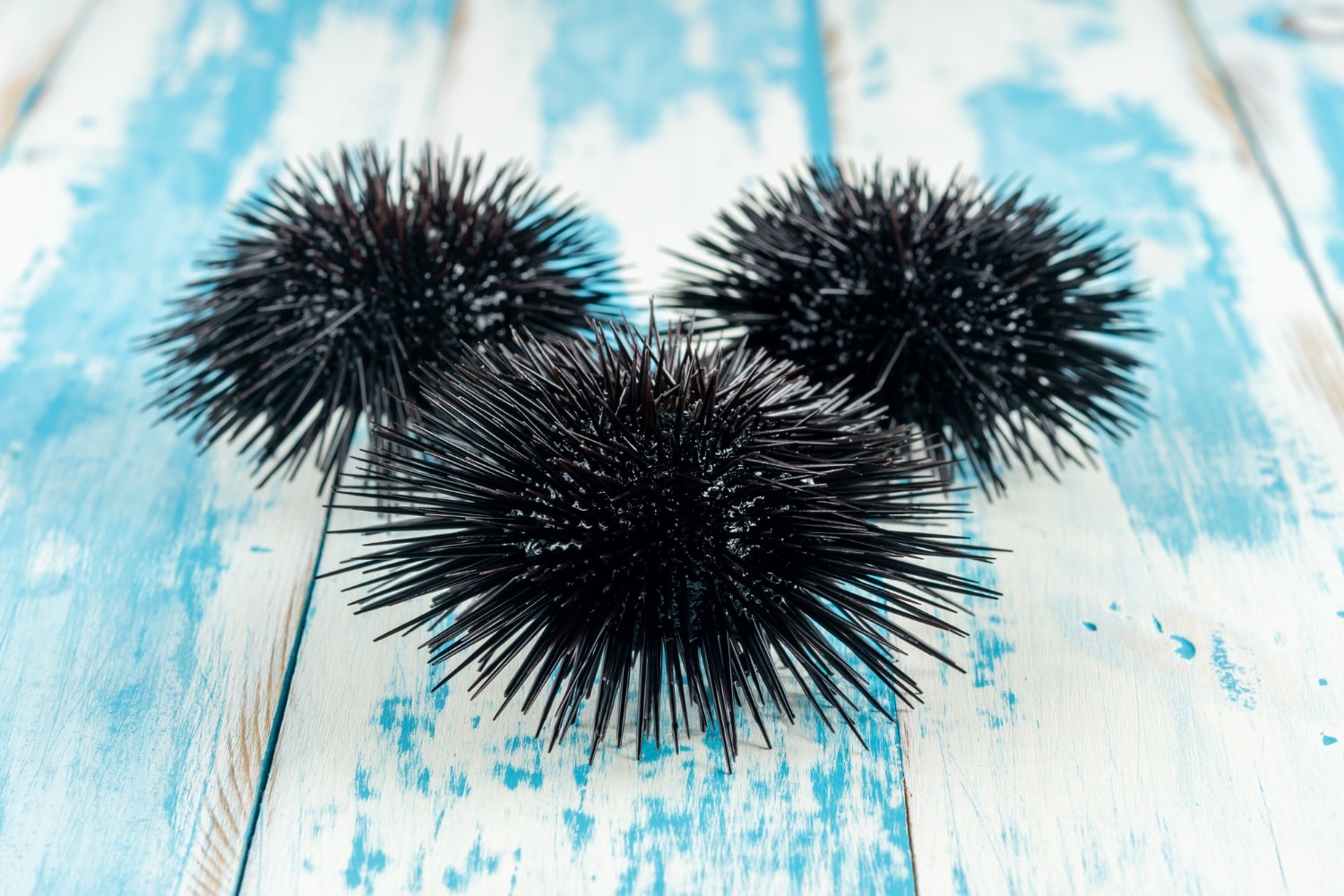Sea urchins are mysterious inhabitants of the ocean floor, fascinating with their symmetry, body structure, and unusual way of life. Their spiny shells resemble small underwater spheres, but beneath this seemingly simple exterior lies a world of remarkable traits. These creatures live in seas across the globe and play a vital role in the ecosystems they inhabit. This collection reveals fascinating facts about sea urchins that you may not have known.
- Sea urchins have a unique fivefold radial symmetry, visible even in their internal anatomy. Despite their spherical shape, their bodies are equipped with five double rows of tube feet arranged around a central axis. This structure helps them move along the seafloor and cling to various surfaces.
- Instead of limbs, sea urchins move using hundreds of tiny tube feet with suction cups. These feet function hydraulically, allowing the animal to glide smoothly along the substrate. They also help in capturing food and cleaning the body of debris.
- The sea urchin’s mouth apparatus is called Aristotle’s lantern and consists of five strong teeth. It is used to scrape algae from rocks and other hard surfaces. Although it wears down over time, its parts can regenerate and remain functional.
- Sea urchins do not have a brain in the traditional sense, but their nervous system allows them to coordinate movements and respond to stimuli. A nerve ring surrounds the mouth, with branches extending throughout the body. This enables them to avoid danger and locate food.
- Sea urchins have no eyes, but they can detect light and shadow using light-sensitive cells in their skin. This ability helps them respond to changes in lighting and seek shelter from direct sunlight. It is a key mechanism for staying hidden from predators.
- Some species of sea urchins have venomous spines that can be dangerous even to humans. Their stings may cause pain, swelling, or allergic reactions, especially in tropical species. However, most sea urchins are harmless and non-aggressive.
- Sea urchins have the ability to regenerate lost body parts. If they lose spines or parts of their shell, they can regrow them over time. This regenerative ability makes them resilient to physical damage.
- Despite their simple appearance, sea urchins have a complex internal structure. Their digestive, vascular, and nervous systems are highly developed for invertebrates. Their symmetrical body layout ensures harmonious operation of all systems.
- Sea urchins feed primarily on algae, detritus, and organic matter that accumulates on the sea bottom. They help clean reefs by reducing excess plant growth, which supports ecological balance. However, if their population grows too large, they can become destructive.
- Most sea urchins are dioecious, meaning they have separate sexes, but some species are hermaphroditic. They reproduce through external fertilization by releasing gametes into the water. The larvae float freely before settling on the bottom and transforming into adult urchins.
- The age of a sea urchin can be determined by growth rings on its shell, similar to tree rings. Some species can live for more than 30 years in natural conditions. Their slow growth is linked to a stable and balanced life cycle.
- Sea urchins are important to scientific and biomedical research. Their embryos are studied to understand early stages of animal development and cellular division processes. Research using sea urchins has led to discoveries of many fundamental biological mechanisms.
- In several countries, sea urchins are considered a delicacy, especially their gonads, which are eaten raw. In Japan, this dish is known as uni and is valued for its delicate marine flavor. Due to high demand, some populations have been overharvested.
- Sea urchins play a crucial role in maintaining coral reef balance by reducing competition between algae and corals. If their numbers drop too low, algae can overgrow reefs and smother corals. Their presence is vital to the health of entire underwater ecosystems.
- Some sea urchin species exhibit interesting behavior by covering themselves with stones, shells, or plant debris. This may protect them from UV light, predators, or serve as camouflage. Such actions are considered a form of adaptive instinct.
- When food is scarce, sea urchins can alter entire ecosystems by consuming vast areas of marine vegetation. This phenomenon, known as an urchin outbreak, can severely impact biodiversity. Monitoring and managing sea urchin populations is essential for marine conservation.
- The unique shapes and patterns of sea urchin shells are used in jewelry, souvenirs, and decorative art. Even after death, their skeletons retain symmetry and beauty. Collectors value them as natural works of art.
- Although they may appear fragile, sea urchins are highly adapted to deep-sea conditions. They have been found at depths exceeding 5,000 meters, where pressure and temperature are extreme. These adaptations make them among the most resilient invertebrates on Earth.
These incredible facts about sea urchins reveal how fascinating seemingly simple marine creatures can be. Their presence demonstrates the complexity and perfection of nature, even in its smallest forms. Thanks to their unique features, sea urchins play a crucial role in maintaining the ecological balance of the oceans. These interesting facts may inspire you to explore the wonders of the underwater world more deeply.





